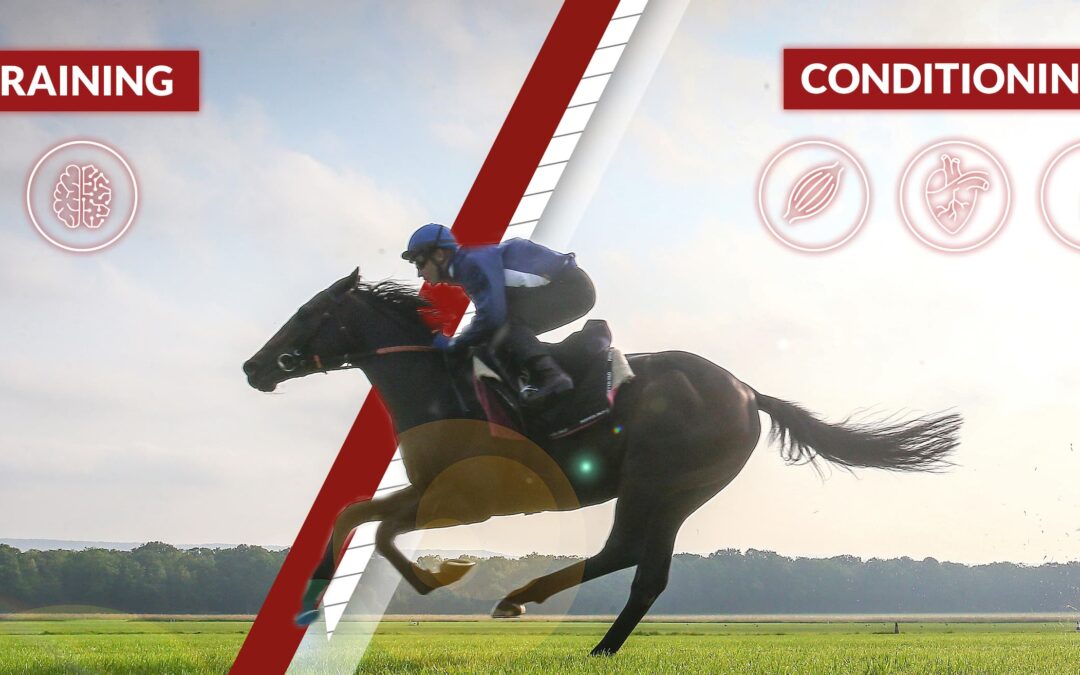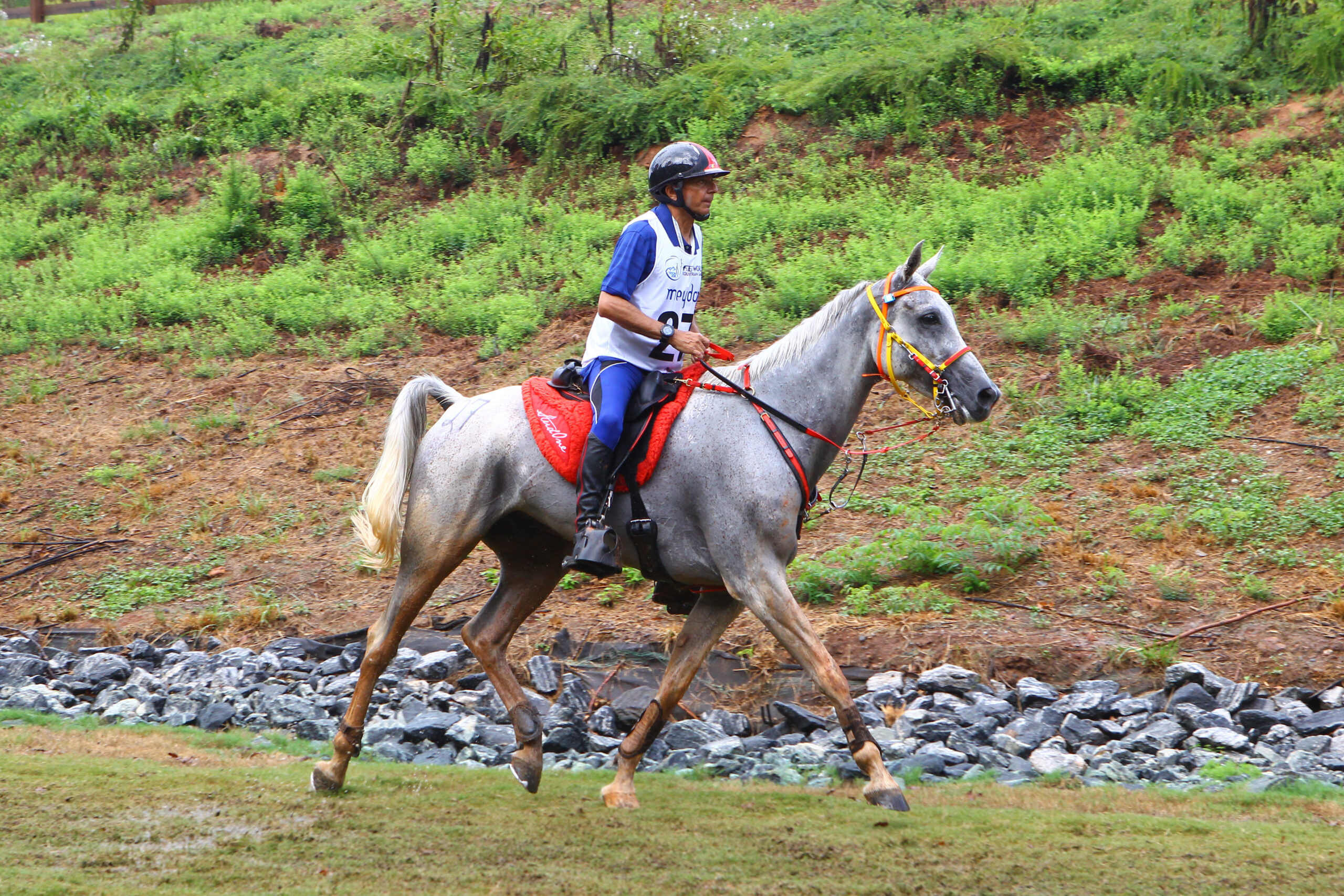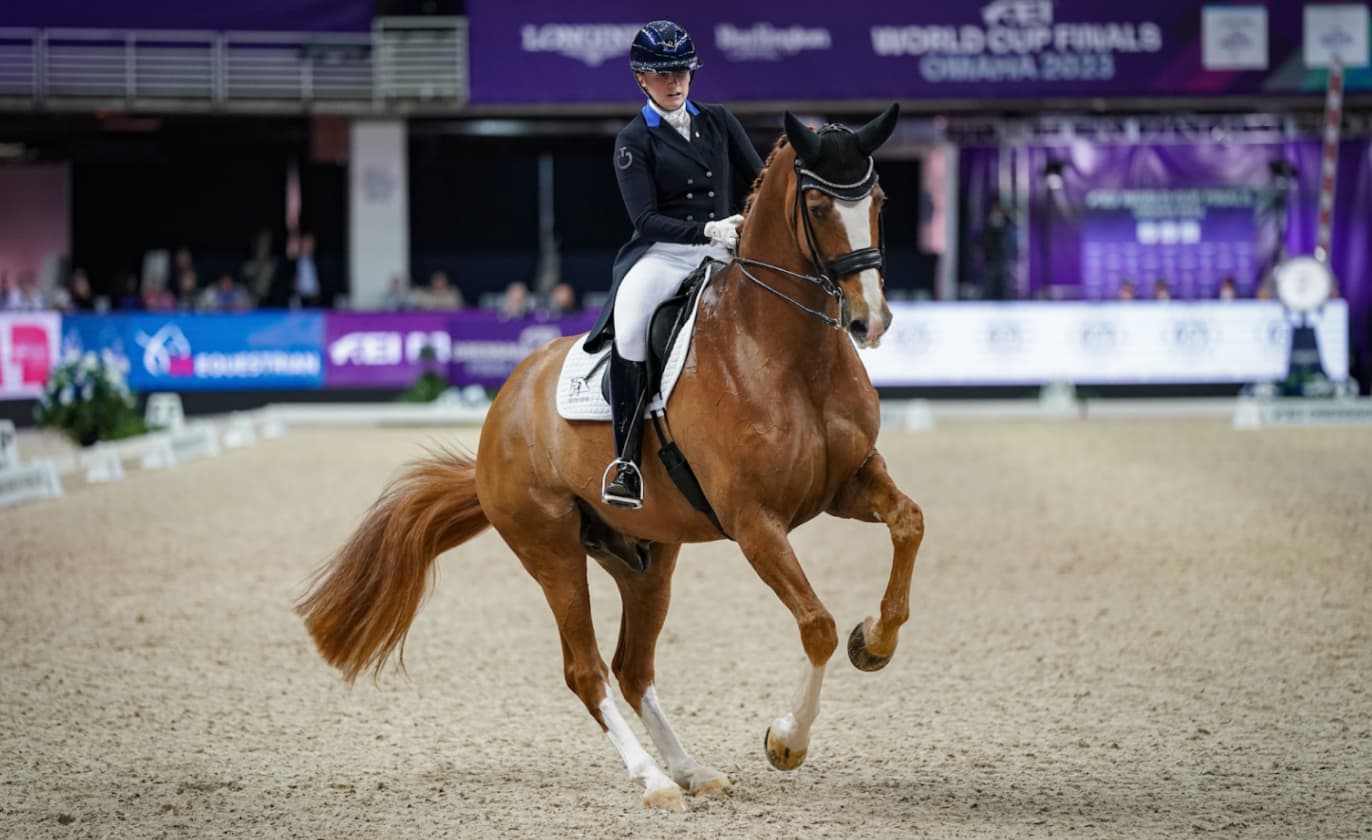Conditioning and training in horses are terms that could be confused. Although both terms lead to an improvement in the horse’s abilities, they do not have the same effects on the horse. This article explains the principle of conditioning and its effects, as well as those of training.
The principle of conditioning
A progressive overload
Conditioning, in horses as in any athlete, follows the principle of progressive overload. This involves stimulating the horse’s physiological system by gradually increasing the workload. It is necessary to apply this progressive pressure on the horse’s system, because if the horse is already capable of managing this pressure, then he has no reason to reallocate precious resources to make a change.
The difficulty of conditioning is here: finding the right balance between maintaining the horse’s fitness progression, while not causing injury.
It is important to note that only the system that has been stimulated will respond to the change and the change will be formulated specifically to respond to that stimulation. The horse’s various systems do not change unless they have been stimulated to change, and only change in response to a specific pressure.
Conservation of resources
In the wild, horses act to preserve their metabolic resources as much as possible. The only effort required is the search for food to meet their vital needs.
This means that, naturally, the horse preserves his resources to the maximum by making the minimum effort to do so. To achieve conditioning, the horse must face up to a constraint. So conditioning comes from giving the horse a reason to change.
The effects of conditioning on horses
Improving physiological systems
We have defined the principle of conditioning, now let’s look at its effects on the horse.
Conditioning a horse is based on physiological changes. Conditioning a horse is what enables him to exceed his limits: to run faster, to have more stamina, to be more fit. The aim of conditioning is to develop the various processes in the horse’s body that limit him:
- The bones become stronger and thicker.
- The heart grows as a result of increased volume, due to both hypertrophy of the muscle and an increase in ventricular cavity capacity.
- The number of mitochondria in skeletal muscle, necessary for aerobic respiration, increases.
These characteristics are found, for example, in endurance horses, which are characterised by remarkable cardiovascular conditioning. These horses work in effort cycles, which enable them to increase their capacity for resistance to effort and their power.
Endurance – ©Scoopdyga
What are the benefits?
Conditioning is an important part of a horse’s physical preparation. It gives the rider or trainer a better understanding of the horse’s physical limits, enabling them to better judge the workload and the conditioning regime. As well as enabling the horse to familiarise itself with the work required of him, by gradually increasing the load, conditioning also has a preventive function. It allows the horse to reach hid full potential, while preserving his health, because the load is progressive and the limits are known.
In addition, conditioning strengthens the various physiological systems subjected to the load, making them stronger. This enables the horse to better withstand the workload and reduce the risk of injury during exercise.
The effects of training on horses
Improving learning capacity
While conditioning has an impact on the physiological system, training takes place in the horse’s brain.
Training can be defined as the conscious and unconscious learning process that enables the horse to do better over time. Training enables the horse to perform a specific movement more smoothly and precisely through repeated practice.
The brain sends signals via the central nervous system to the corresponding muscle. The aim is to transform this action from a conscious thought into an automatic response that no longer requires conscious thought. The ultimate aim is to turn this automatic response into a reflex.
This work takes place in the horse’s brain, through neural control. Repetitive movements are learned by the central nervous system, and this is one of the ways in which training differs from conditioning. While conditioning is based on pushing the horse’s limits, the horse’s mental training takes place in the absence of fatigue. For quality training, the horse must be able to use his neurological capacity to the best of his ability. Nervous system fatigue leads to a drop in concentration and a lack of vigilance, which is counterproductive and can even lead to injury.
This is particularly true of dressage horses, which need to have refined neuromuscular control, so that they can work deep muscles and concentrate on their balance.
Dressage – ©Scoopdyga
What are the benefits?
We saw earlier that conditioning puts pressure on a specific system, and the same applies to training. The horse must be able to contract the right muscle, thanks to the improvement in his neuromuscular capacities resulting from training.
In this way, the horse can target his effort on certain muscles and push them to their maximum potential. Moreover, an effective muscular connection enables the horse to target his efforts, but also to improve the functioning of the muscle chains, thanks to the transfer of power from the main muscle to the auxiliary muscles.
In the same way as conditioning, training reduces the risk of injury. The better the connection between the muscles and the brain, the better the muscular coordination. This allows the horse to reduce the risk of poor movements, which could lead to injury.
Conclusion
Conditioning and training are therefore two different processes in their operation and effects. They are nonetheless complementary, and the equine athlete’s programme includes both, in order to maximise performance while preserving physical integrity.
Key words: conditioning, training, physiology
Sources:
Connexion neuromusculaire : Définition, bienfaits, Exercices (2023) foodspring Magazine. Available at: https://www.foodspring.fr/magazine/connexion-neuromusculaire (Accessed: 09 June 2023).
Importance of conditioning a horse for their job (2021) Finish Line® Horse Products, Inc. Available at: https://www.finishlinehorse.com/2018/07/importance-of-conditioning-a-horse-for-their-job/#:~:text=Conditioning%20is%20good%20for%20the%20horse’s%20health&text=Regular%20exercise%20can%20build%20cardiovascular,well%2Dbeing%20in%20working%20animals. (Accessed: 09 June 2023).
Physical conditioning of Horses – Oklahoma State University (2017) Physical Conditioning of Horses | Oklahoma State University. Available at: https://extension.okstate.edu/fact-sheets/physical-conditioning-of-horses.html#:~:text=The%20goal%20of%20conditioning%20is,the%20horse%20and%20performance%20goal. (Accessed: 09 June 2023).
Connexion neuromusculaire : Définition, bienfaits, Exercices (2023) foodspring Magazine. Available at: https://www.foodspring.fr/magazine/connexion-neuromusculaire (Accessed: 09 June 2023).




